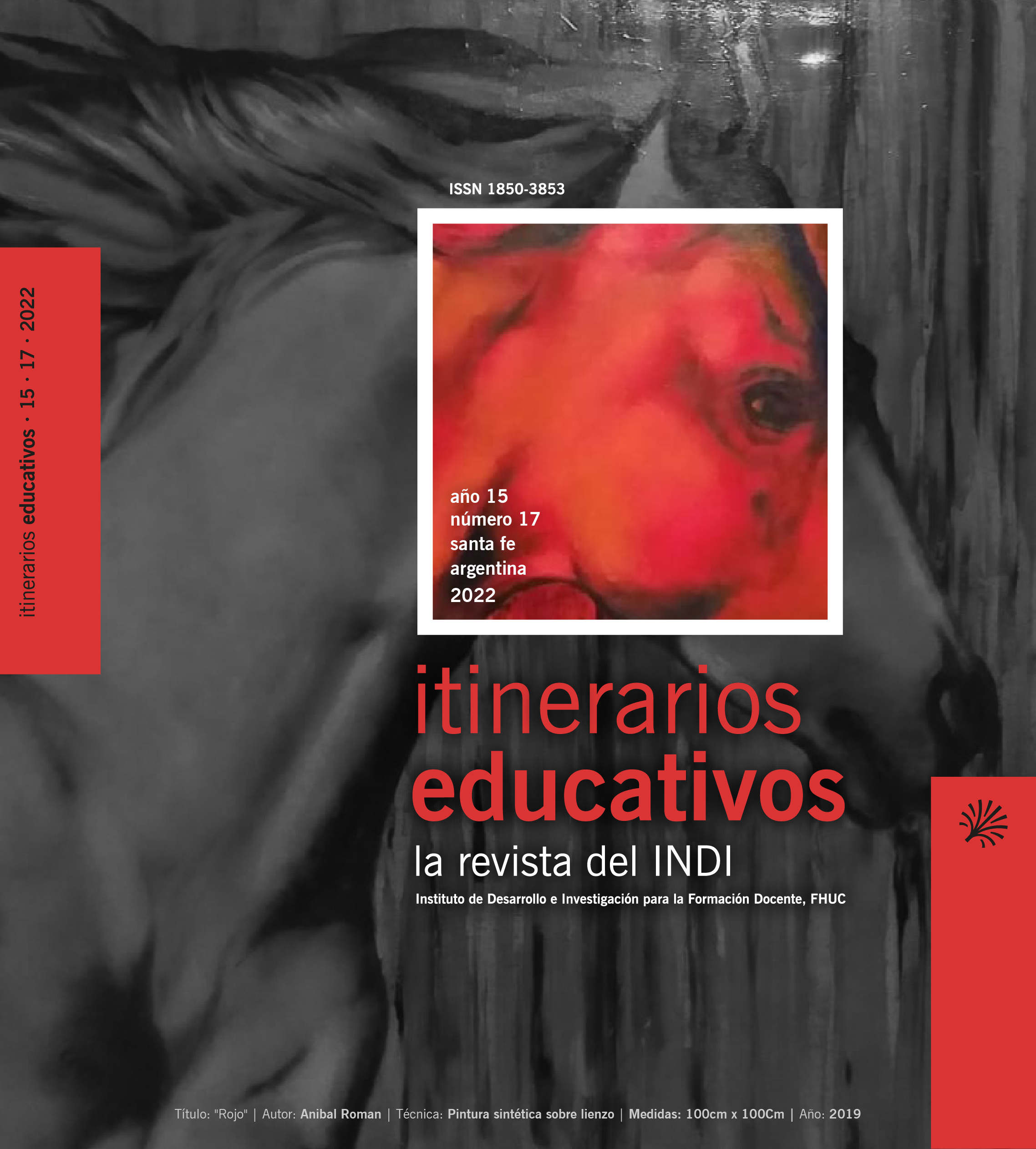An analysis of innovations in the school formats proposed by the government plan called Vuelvo a Estudiar and its impact on the school experience of young and adult students in the province of Santa Fe, Argentina
DOI:
https://doi.org/10.14409/ie.2022.17.e0034Keywords:
school format, plan Vuelvo a Estudiar, youth and adult education, school experienceAbstract
This article analyzes the intervention of the different school formats proposed by the government plan called Vuelvo a Estudiar in the school experience of the interviewed students between 2017 and 2020. The aforementioned plan was a social and education policy implemented by the government of the province of Santa Fe aimed at restoring the right to education and the socio-educational inclusion of adolescents, young people, and adults in secondary schooling. In this framework, a qualitative methodological design was proposed and interviews were conducted as the main data collection technique. The analysis focuses on the way in which the different school formats enabled by the plan intervene in the construction of particular school experiences, which can involve face-to-face, virtual, and/or remote work.
References
Barbero, J. M. (2002). Jóvenes: comunicación e identidad. Pensar Iberoamérica.
Braslavsky, C (1985). La discriminación educativa en Argentina. Buenos Aires: FLACSO –Grupo Editor Latinoamericano.
Coll, E (2006). Lo básico en la educación básica. Reflexiones en torno a la revisión y actualización del currículo de la educación básica. Revista electrónica de investigación educativa N° 8. Recuperado de: https://www.redalyc.org/pdf/155/15508110.pdf
Crego, M. L, & González, F. M. (2018). La temporalidad escolar en cuestión. Negociaciones en una escuela secundaria y en un Plan FiNEs. Propuesta Educativa N° 49, 84-93. Recuperado de: https://www.memoria.fahce.unlp.edu.ar/art_revistas/pr.9254/pr.9254.pdf
Díaz Barriga, Á (2014). Competencias. Tensión entre programa político y proyecto educativo. Propuesta Educativa Número 42 – Año 23, 9-27. Recuperado de: https://www.redalyc.org/pdf/4030/403041713003.pdf
Dubet, F. (2006). El declive de la institución. Profesiones, sujetos e individuos ante la reforma del Estado. Barcelona: Gedisa.
Giovine, R. (2012). El arte de gobernar el sistema educativo. Bernal: Ed. UNQuilmes.
Gluz, N. (2019). ¿Masificación o democratización? Debates en torno a las transformaciones del nivel secundario. En A. C. A. M. Ezcurra (coord.), Derecho a la educación. Expansión y desigualdad: tendencias y políticas en Argentina y Latinoamérica (págs. 109-124). Caseros: EdUNTREF.
Hamilton, D. (1993). Orígenes de los términos educativos «clase» y «currículum». Revista Iberoamericana de Educación. Recuperado de: https://rieoei.org/historico/oeivirt/rie01a06.htm
Kessler, G. (2014). Controversias sobre la desigualdad. Buenos Aires: Fondo de Cultura Económica.
Krichesky, M. (2014). Formatos escolares alternativos y desigualdades sociales. Resultados de un estudio y reflexiones en torno al derecho a la educación secundaria. De prácticas y discursos, 1-19. Recuperado de: https://revistas.unne.edu.ar/index.php/dpd/article/view/787
Meccia, E. (2020). Biografía y sociedad: métodos y perspectivas. Santa Fe: Eudeba–Ed. UNL. Recuperado de: https://bibliotecavirtual.unl.edu.ar:8443/bitstream/handle/11185/5515/biografiasociedad.pdf?sequence=1&isAllowed=y
Terigi, F. (2009). El fracaso escolar desde la perspectiva psicoeducativa: hacia una reconceptualización situacional. Revista Iberoamericana de Educación, 23-39. Recuperado de: https://rieoei.org/historico/documentos/rie50a01.pdf
Tiramonti, G. (2007). La trama de la desigualdad educativa: mutaciones recientes en la escuela media. Buenos Aires: Manantial.
Ziegler, S. (2011). Entre la desregulación y el tutelaje. ¿Hacia dónde van los cambios en los formatos escolares? En G. Tiramonti (comp.), Variaciones sobre la forma escolar. Límites y posiblidades de la escuela media (págs. 71-88). Rosario: Homo Sapiens.
Published
How to Cite
Issue
Section
License
Copyright (c) 2022 Itinerarios Educativos

This work is licensed under a Creative Commons Attribution-ShareAlike 4.0 International License.
Those authors who have publications with this magazine, accept the following terms:
The authors will retain their copyright and guarantee the journal the right of first publication of their work,
which will be simultaneously subject to the Creative Commons Recognition License that allows third parties to share
the work whenever its author and first publication this magazine.
Authors may adopt other non-exclusive licensing agreements for the distribution of the published work (eg, deposit
it in an institutional telematic file or publish it in a monographic volume) whenever the initial publication in this
journal is indicated.
Authors are allowed and advised to disseminate their work through the Internet (eg, in institutional telematic files
or on their website) before and during the submission process, which can produce interesting exchanges and increase
citations of the published work. (See The effect of open access).
















